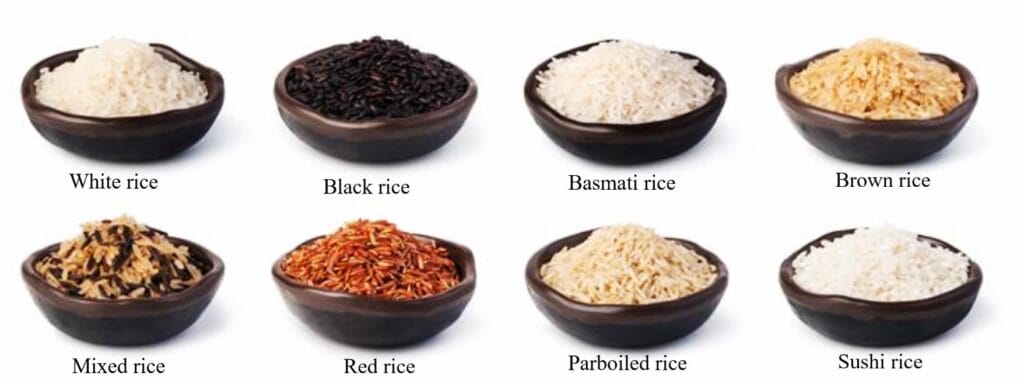Introduction
Rice is the staple food crop in India whose estimated production has reached to 115mt from 43mha area in 2019. There are mostly two species of rice cultivated in the world e.g. Oryza sativa and Oryza glabberiama among which Oryza sativa is cultivated in Asia and America and Oryza glabberima is confined to Africa. O. sativa has three sub species i.e. Indica, Japonica and Javanica among which Indica sub species is confined to India. There were thousands of rice varieties of nutritionally superior quality grown in India, but after green revolution due to mono cropping and drastic reduction in crop diversification their cultivation was limited to a greater extent and maximizing the yield became the prime goal. Continuous consumption of white rice as staple food grain resulted in malnutrition, iron deficiency anemia and aggravated diabetes. Though there are certain technologies have developed to fortify rice with targeted nutrient i.e. biofortification (Jena et al., 2018), traditional forbidden rice varieties i.e. brown rice, black rice, red rice, green rice, etc. have tremendous potential to solve these nutritional issues.
Different types of rice
There are more than 40000 cultivated rice varieties that exist worldwide. Over 90000 samples of cultivated and wild rice species are stored in the International Rice Gene Bank among which, some special rice types are explained here;
White rice: Here the husk, bran layer and the germ are removed hence is less nutritious than brown, red and black rice. Easily digested as low in fiber content hence recommended for children and older one. It provides lots of energy and relieves from morning sickness and digestive disorders i.e. dysentery, diarrhea and colitis. It has soothing power and can be helpful in curing skin inflammation caused by burns, prickly heat, measles, small-pox etc. Polished white rice is nothing more than refined starch and nearly all of the nutrients and vitamins are removed during its processing.
Brown rice: Partially milled rice where bran layer is retained. This rice though has a lot of health benefits i.e. high fiber content, high nutrient retention, increases good cholesterol and lowers blood pressure, has lower glycemic index; it is being neglected for consumption due to its higher price, ignorant of its health benefits and unpleasant aroma as well as texture. It is also a good source of Mg, P, Vitamin B6, fiber and Se but due to proven presence of arsenic, doctors recommend its lesser usage.
Red rice: Red rice is rich in iron and vitamin B6. Consumption of red rice prevents malnutrition i.e. iron deficiency anemia. Vitamin B6 balance the formation of red blood cells and serotonin, controls blood sugar level and helps in DNA production. It also encounters the risk of cancer. Therefore, to stay fit and active, red rice consumption is a good choice even if you don’t get appealing taste.

Black rice: Black rice is also called as “emperor’s rice” or “forbidden rice”. The black color is due to high level of anthocyanin content. Black rice is rich in iron, vitamin E and anthocyanin antioxidants. It is helpful for people suffering from diabetes and Alzheimer’s disease. It has rich source of protein and fibers but costlier than both white and brown rice.
Basmati rice: The unique aroma in basmati rice is due to compound 2-acetyl-1-pyrroline. It has higher fiber content, low in glycemic index and hence safe for diabetes patients.
Jasmine rice: Originates from Thailand, so called Thai fragrant or Thai sticky rice. This rice is popular in South East Asia for its long grain and floral aroma. This can be used as substitute for basmati rice. It helps in lessening muscle pain in the body due to high amino acid content.
Matta or rosematta rice: This is a medium grain red colored rice and its bran layer is rich in natural nutrients. This variety calls for meaty accompaniment and known for its robust earthy flavor.
Sticky glutinous rice: It doesn’t contain dietary gluten but due to higher starch content, results in sticky, glue like textured after cooked. The copper content in this rice strengthens the connective tissue, supports immune system and promotes brain function.
Green rice: This is the forbidden, organic, short grain, bamboo extract infused brown rice which have green tea like aroma, leafy green colored when cooked and mild nutty textured. It works well with sushi or risottos due to its sticky nature. These are organic, rich in fiber, rich in chlorophyll, gluten free, non-GMO products with superior quality in terms of aroma, texture and nutrition.
Sushi rice: This is short grain, white or brown Japanese rice. Like sticky rice, it has also more stickiness due to higher starch content which make it suitable for different types of sushi.
Valencia rice: It is short grain, high in starch content, tender, sticky and absorb more liquid, making it ideal for soups and stews.
Conclusion
Post green revolution targets emphasized only on yield maximization, but achieving food security with sustainable goals should be the prime focus. Due to lower productivity and higher price tag, the nutritionally enriched rice i.e. brown rice, black rice, red rice, green rice etc. cannot be accessed by everyone especially the targeted community or economically backward section. Therefore, their introduction as main crop and awareness to people about their health benefits may eradicate the problems of malnutrition to some extent. Though they cannot be afforded to take as that of white rice, they may be consumed with white or brown rice to have some additive health benefits.
References
[1] Jena, J., Sethy, P., Jena, T., Misra, S. R., Sahoo, S. K., Dash, G. K. and Palai, J. B., (2018). Rice biofortification: A brief review. Journal of Pharmacognosy and Phytochemistry. 7(1): 2644-2677.
[2] Benefits of different types of Indian rice (2017). https://timesofindia.indiatimes.com/life-style/health-fitness/diet/benefits-of-different-types-of-indian-rice/articleshow/21480825.cms
[3] Pavani (2018). These are the popular rice varieties of India that you probably not aware. https://www.entertales.com/popular-rice-varieties-india/
[4] Rice Association.org.uk (2019). Types of rice. http://www.riceassociation.org.uk/content/1/18/types-of-rice.html
